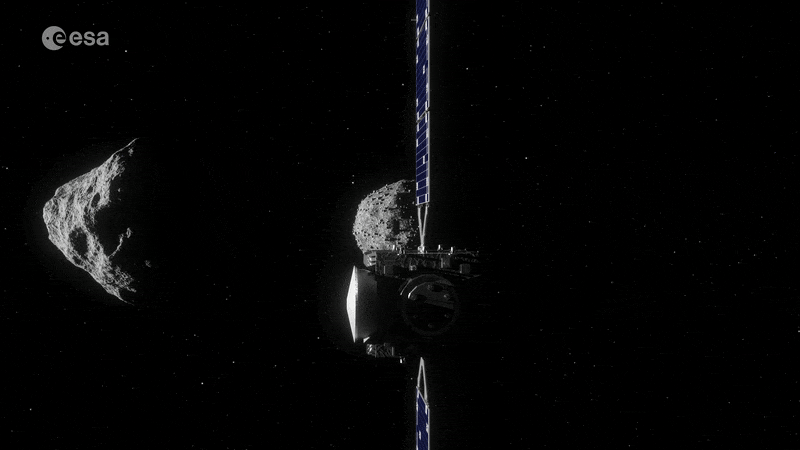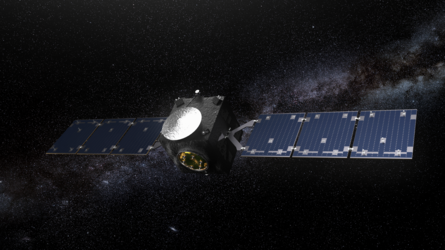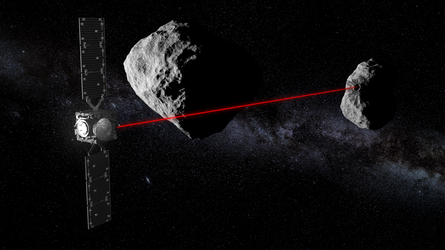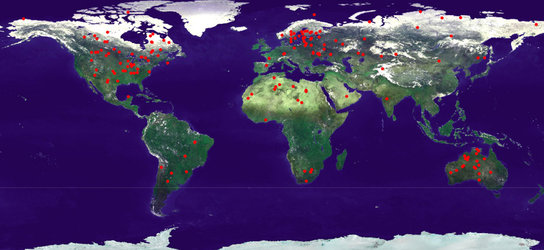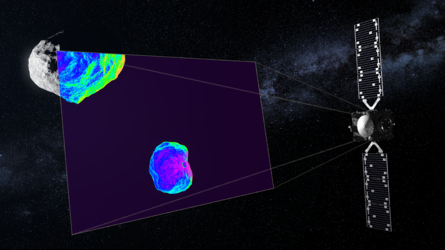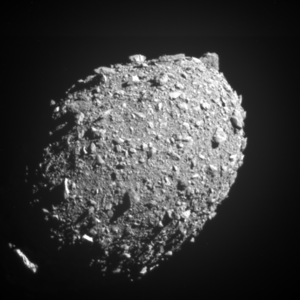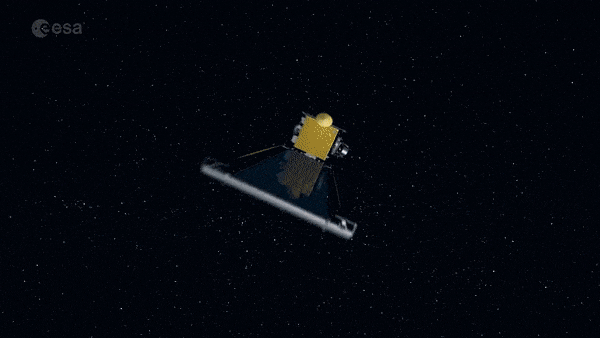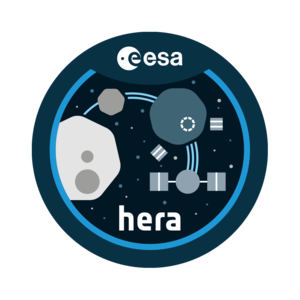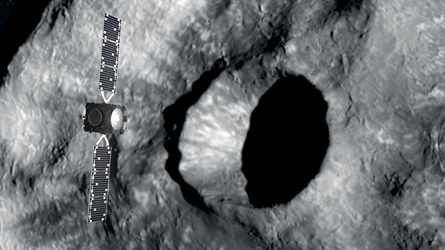Planetary defence
The cratered face of the Moon is mute testimony to the frequency of asteroid strikes in the Solar System. And Earth itself is hardly immune. According to the Lunar and Planetary Laboratory at the University of Arizona our homeworld has suffered upwards of three million impact craters larger than 1 km in diameter – the largest stretching more than 300 km in diameter.
The 1908 Tunguska impact in Siberia, the largest impact in recorded history, is thought to have been triggered by an incoming object of 30-40 m in diameter. The 2013 Chelyabinsk airburst, whose shockwave struck six cities across Russia, may have been caused by an asteroid just 20 m across.
ESA has been considering the use of space missions for asteroid risk assessment for almost two decades. Although the chance of a major asteroid impact is low, the potential consequences to our society could be very severe. Small bodies are continually colliding with Earth, however, the vast majority of these objects are very small and pose no threat to human activity.
Larger impacts are rarer, but, when they do occur, they can lead to a major natural catastrophe. For comparison, the energy released from the Tohoku earthquake in Japan (3rd March 2011) was estimated to be approximately 45 megatons; this natural disaster caused an estimated economic loss of over $200 billion according to the World Bank.

The effects of an asteroid impact on Earth depends on many factors, such as, for instance, the location of impact, trajectory and physical properties of the asteroid, etc., but a small 150 m object could release several times the amount of energy released in Tohoku.
The difference with earthquakes though is that for an asteroid impact we do have the technology available to mitigate such a threat, but it has never been tested in realistic conditions. Moreover, the design of an efficient mitigation strategy relies on our understanding of the physical properties of threatening objects and their response to a mitigation tool, which is still extremely poor.
Most of the techniques that have been proposed to avoid an Earth impact event are linked to altering the trajectory of an asteroid on a collision course with Earth. Among these proposals, the one that is currently being considered as more mature, because it is based on existing and affordable spacecraft technology, is the kinetic impactor, which changes the orbit of an asteroid by a direct hit of a spacecraft at a very high relative speed (several km/s).
Europe has conducted thorough studies of this approach – such as the Don Quijote mission concept, which gave rise to AIDA – which would be suitable to address the statistically most common threats, namely of bodies of up to a few hundred meters in diameter. In the framework of such mitigation studies, a better understanding of the fragmentation process resulting from an impact is required to answer essential questions:
- How does impactor momentum transfer depend on the bulk density, porosity, surface and internal properties of the target near-Earth object and the relative velocity vector of the impactor?
- How much impactor kinetic energy may be going into fragmentation and restructuring or into the kinetic energy of the ejected material?
- Can momentum enhancing ejecta production be characterised in terms of parameters that are, for many objects, only available from ground-based observations, such as the taxonomic type?
Hera will be Europe and humankind’s first investigation of a planetary defence technique. Together with its US counterpart, DART, Hera is part of the AIDA collaboration, called into life to study the effect of a kinetic impactor hitting an asteroid. The target of the mission is the Didymos double asteroid system with its moon Dimorphos, which DART impacted in 2022.















 Germany
Germany
 Austria
Austria
 Belgium
Belgium
 Denmark
Denmark
 Spain
Spain
 Estonia
Estonia
 Finland
Finland
 France
France
 Greece
Greece
 Hungary
Hungary
 Ireland
Ireland
 Italy
Italy
 Luxembourg
Luxembourg
 Norway
Norway
 The Netherlands
The Netherlands
 Poland
Poland
 Portugal
Portugal
 Czechia
Czechia
 Romania
Romania
 United Kingdom
United Kingdom
 Slovenia
Slovenia
 Sweden
Sweden
 Switzerland
Switzerland


























